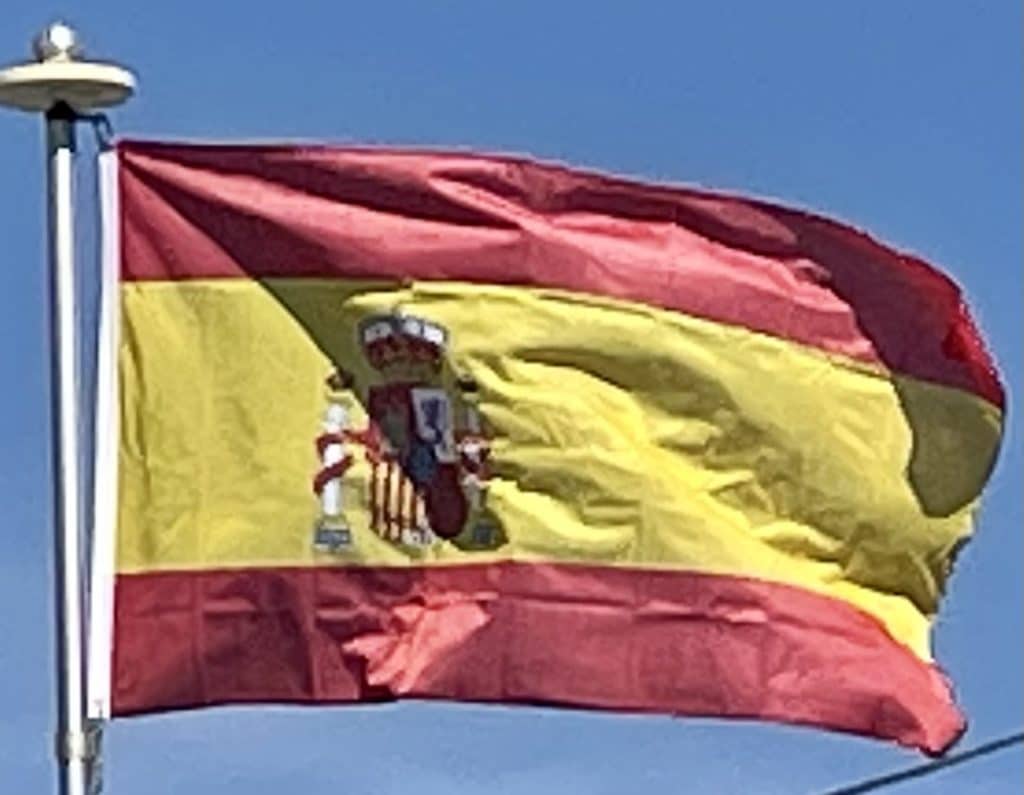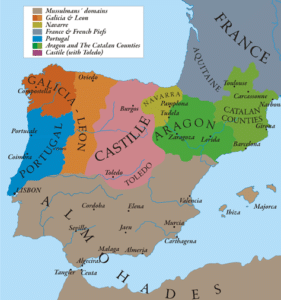
Spain is a secular parliamentary democracy and a constitutional monarchy, with King Felipe VI as head of state. It is a highly developed country and a high income country, with the world’s fourteenth-largest economy by nominal GDP and the sixteenth-largest by PPP. Spain has one of the longest life expectancies in the world. Spain is a member of the United Nations (UN), the European Union (EU), the Eurozone, the Council of Europe (CoE), the Organization of Ibero-American States (OEI), the Union for the Mediterranean, the North Atlantic Treaty Organization (NATO), the Organisation for Economic Co-operation and Development (OECD), Organization for Security and Co-operation in Europe (OSCE), the Schengen Area, the World Trade Organization (WTO) and many other international organizations.
History:
Prehistory and pre-Roman Peoples:
Archaeological research at Atapuerca indicates the Iberian Peninsula was populated by hominids 1.2 million years ago. In Atapuerca fossils have been found of the earliest known hominins in Europe, the Homo antecessor. Modern humans first arrived in Iberia, from the north on foot, about 35,000 years ago. The best known artifacts of these prehistoric human settlements are the famous paintings in the Altamira cave of Cantabria in northern Iberia, which were created from 35,600 to 13,500 BCE by Cro-Magnon.
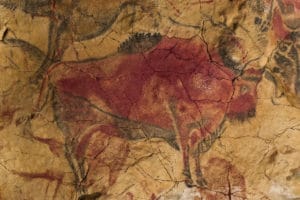
Archaeological and genetic evidence suggests that the Iberian Peninsula acted as one of several major refugia from which northern Europe was repopulated following the end of the last ice age.
The largest groups inhabiting the Iberian Peninsula before the Roman conquest were the Iberians and the Celts. The Iberians inhabited the Mediterranean side of the peninsula, from the northeast to the southeast. The Celts inhabited much of the inner and Atlantic sides of the peninsula, from the northwest to the southwest.
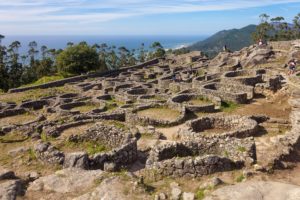
Basques occupied the western area of the Pyrenees mountain range and adjacent areas, the Phoenician-influenced Tartessians culture flourished in the southwest and the Lusitanians and Vettones occupied areas in the central west. Several cities were founded along the coast by Phoenicians, and trading outposts and colonies were established by Greeks in the East. Eventually, Phoenician-Carthaginians expanded inland towards the meseta; however, due to the bellicose inland tribes, the Carthaginians got settled in the coasts of the Iberian Peninsula.
Roman Hispania and the Visigothic Kingdom:
During the Second Punic War, roughly between 210 and 205 BC the expanding Roman Republic captured Carthaginian trading colonies along the Mediterranean coast. Although it took the Romans nearly two centuries to complete the conquest of the Iberian Peninsula, they retained control of it for over six centuries. Roman rule was bound together by law, language, and the Roman road.
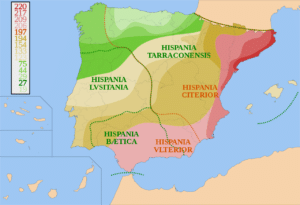
The cultures of the Celtic and Iberian populations were gradually Romanized (Latinized) at different rates depending on what part of Hispania they lived in, with local leaders being admitted into the Roman aristocratic class. Hispania served as a granary for the Roman market, and its harbors exported gold, wool, olive oil, and wine. Agricultural production increased with the introduction of irrigation projects, some of which remain in use. Emperors Hadrian, Trajan, Theodosius I, and the philosopher Seneca were born in Hispania. Christianity was introduced into Hispania in the 1st century AD and it became popular in the cities in the 2nd century AD. Most of Spain’s present languages and religion, and the basis of its laws, originate from this period.
